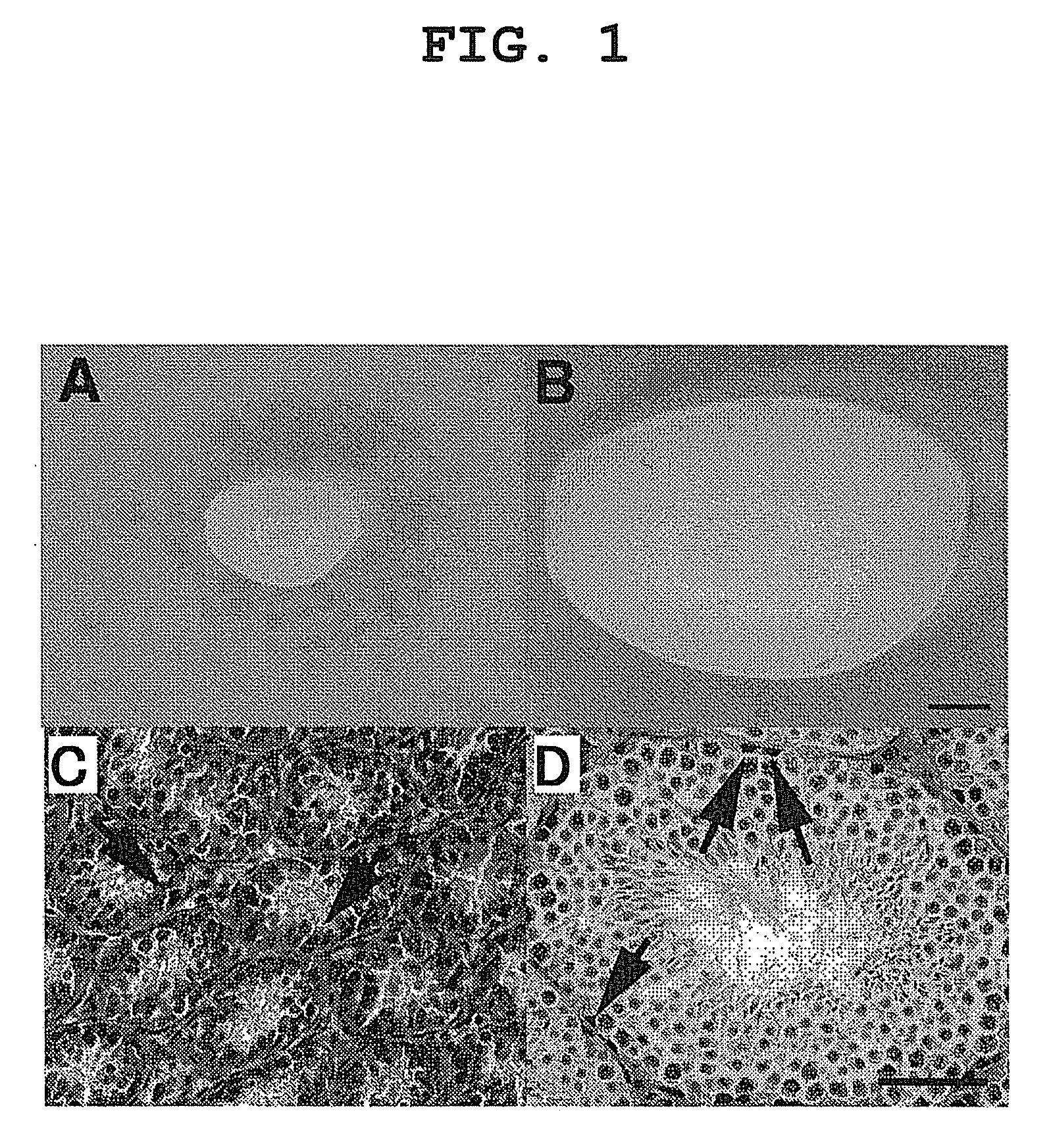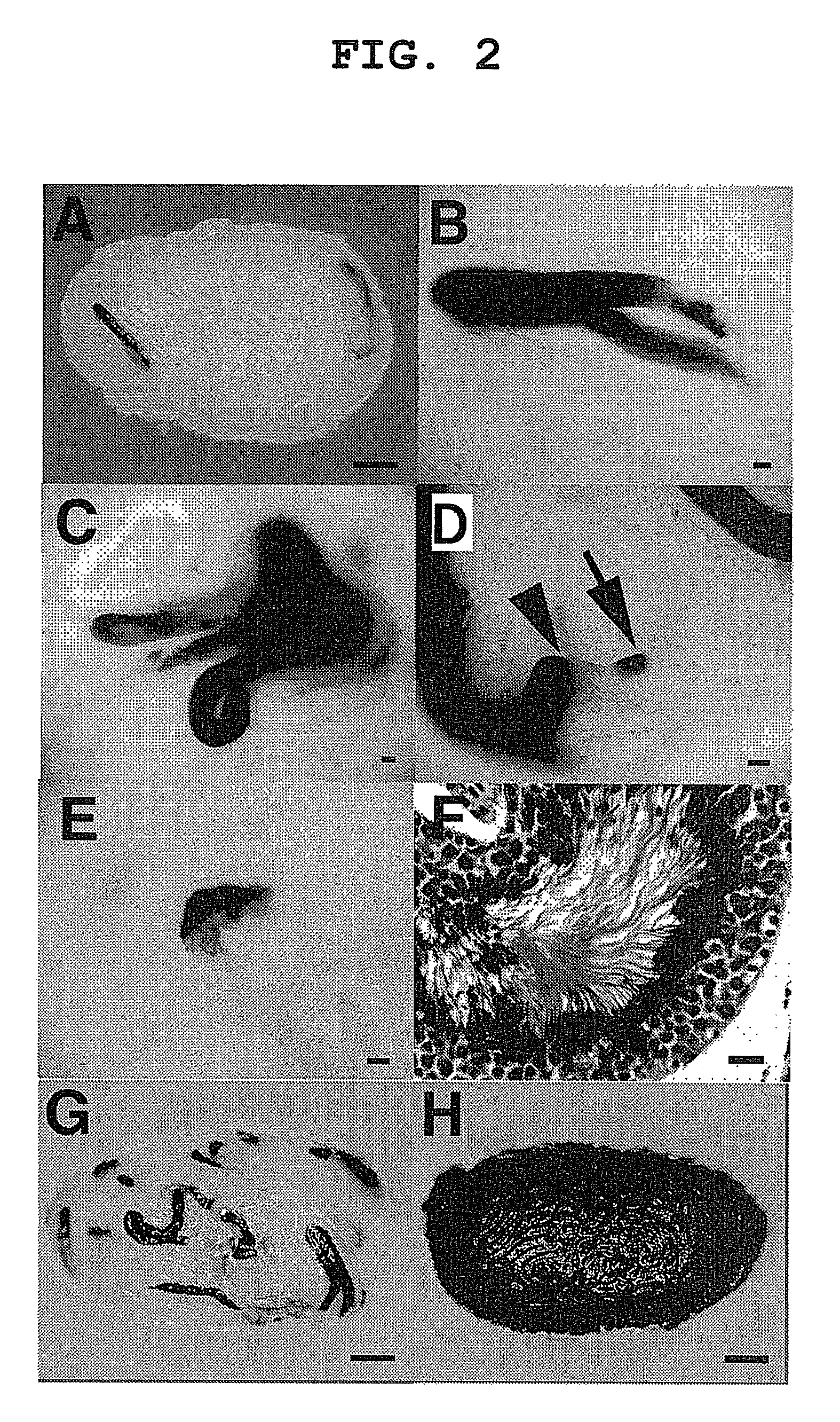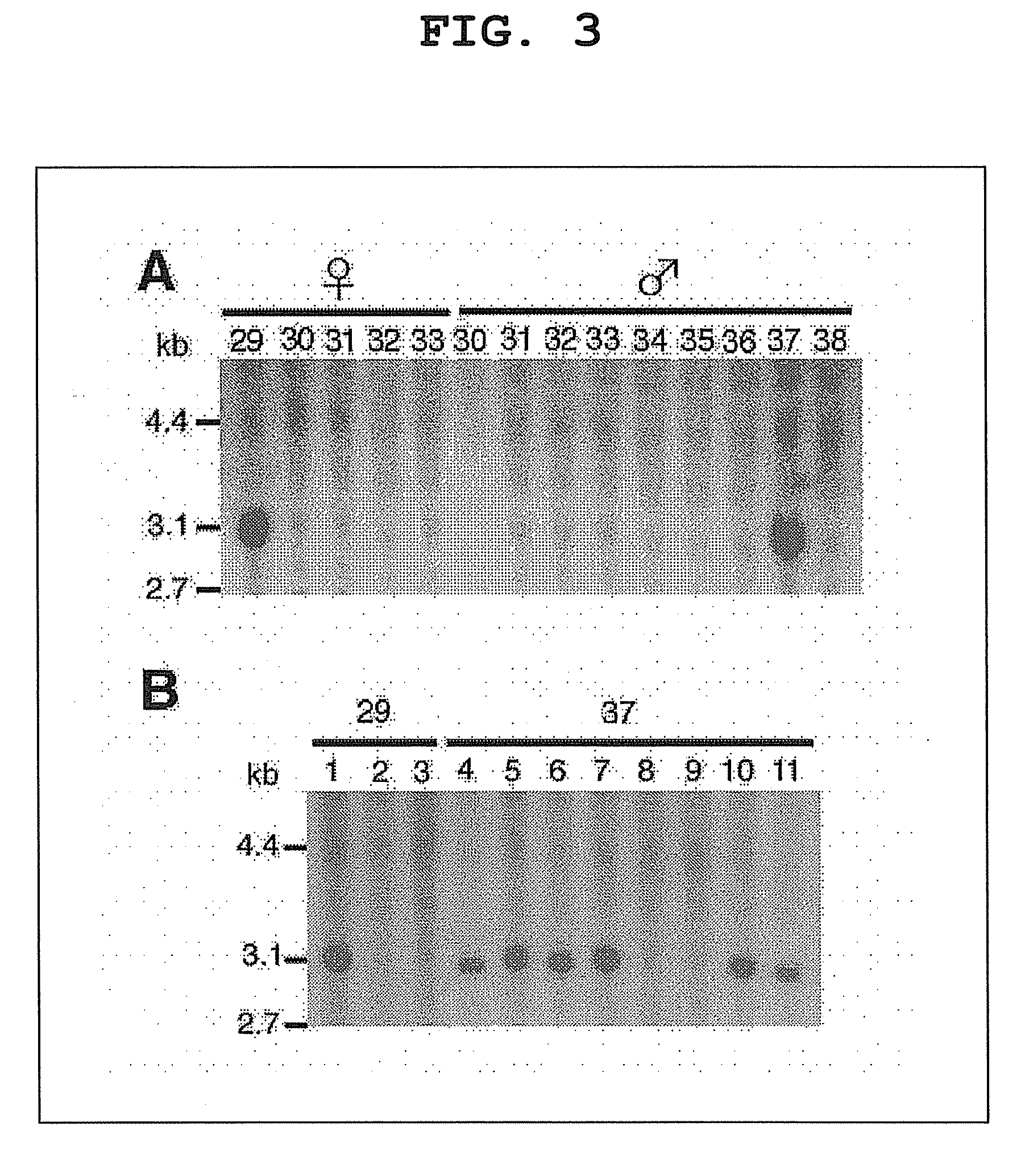Method of gene introduction in in-vivo spermatogenic cell
a spermatogenic cell and gene technology, applied in the field of in-vivo spermatogenic cell gene introduction, can solve the problems of difficult to obtain transgenic animals in more than 1% of injected embryos, several limitations, and limited attempts to use germ cells obtained from females for other animal species, and achieve the effect of high efficiency and without reducing the number of spermatogonial stem cells
- Summary
- Abstract
- Description
- Claims
- Application Information
AI Technical Summary
Benefits of technology
Problems solved by technology
Method used
Image
Examples
example
Materials and Methods
(Animals and Microinjection Procedure)
[0055]C57BL / 6 (B6), BALB / C, C3H, DBA / 2 and A mice were purchased from Japan SLC (Shizuoka, Japan). Both immature pups (5-10 days old) and adult (4-6 weeks old) mice were used for virus injection. In some experiments, operated mice were mated with wild-type B6 females to produce transgenic offspring. For the testicular injections, approximately 2 μl of DMEM / 10% fetal calf serum (DMEM / FCS) containing retrovirus particles were introduced into the seminiferous tubules of an immature testis, while 10 μl were introduced into the tubules of a mature mouse testis, because the latter are larger. Microinjection was by efferent duct injection (Int. J. Dev. Biol. 41, 111-122, 1997), which filled 75-85% of the tubules in each recipient testis. Adult mice were anesthetized by Avertin injection (640 mg / kg). Pups were placed on ice to cause hypothermia-induced anesthesia (Proc. Natl. Acad. Sci. USA, 98, 6186-6191, 2001). In some experiments...
PUM
| Property | Measurement | Unit |
|---|---|---|
| time | aaaaa | aaaaa |
| time | aaaaa | aaaaa |
| time | aaaaa | aaaaa |
Abstract
Description
Claims
Application Information
 Login to View More
Login to View More - R&D
- Intellectual Property
- Life Sciences
- Materials
- Tech Scout
- Unparalleled Data Quality
- Higher Quality Content
- 60% Fewer Hallucinations
Browse by: Latest US Patents, China's latest patents, Technical Efficacy Thesaurus, Application Domain, Technology Topic, Popular Technical Reports.
© 2025 PatSnap. All rights reserved.Legal|Privacy policy|Modern Slavery Act Transparency Statement|Sitemap|About US| Contact US: help@patsnap.com



